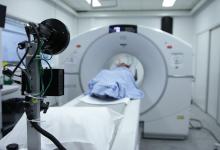Increasing Risk of Septic Arthritis with Age Save

A retrospective population-based study from New Zealand examined the epidemiology, clinical features, and microbiology of adult native joint septic arthritis. Specifically, they studied the populatoin of Canterbury, New Zealand over a 5-year period - looking at individuals with and without an underlying rheumatic disorder.
Among the 248 cases of septic arthritis, mean age was 60 years and the incidence rate was 12.0/100,000/year (95% CI 10.6-13.6). Factors influencing the risk for septic arthritis included 1) increasing age (highest at >90 yrs - 73.4/100,000) and underlying inflammatory arthritis (in 27%), including gout (14.9%), calcium pyrophosphate disease (8.5%), and rheumatoid arthritis (4%). Those with underlying inflammatory arthritis and septic arthritis were significantly older (73.6 yrs vs 55.6 yrs), female (55.2% vs 26.0%), and have polyarthricular septic arthritis (16.4% vs 4.4%).
Septic arthritis was iatrogenic in 16.9% of cases (editor's note: interesting as the oft-quoted risk of septic arthritis is estimated to be 1/20,000–1/500,000 for arthrocentesis and 1/50–1/200 for arthroscopy). Very few were taking immunosuppressants and only one was on a biological agent. Staphylococcus aureus was the most commonly identified organism. The 30-day mortality was 2%, increasing to 6% at 90 days.
Crystal arthropathy commonly coexisted with infection. Autoimmune arthritis and immunosuppression was less than expected as a contributory factor.










If you are a health practitioner, you may Login/Register to comment.
Due to the nature of these comment forums, only health practitioners are allowed to comment at this time.